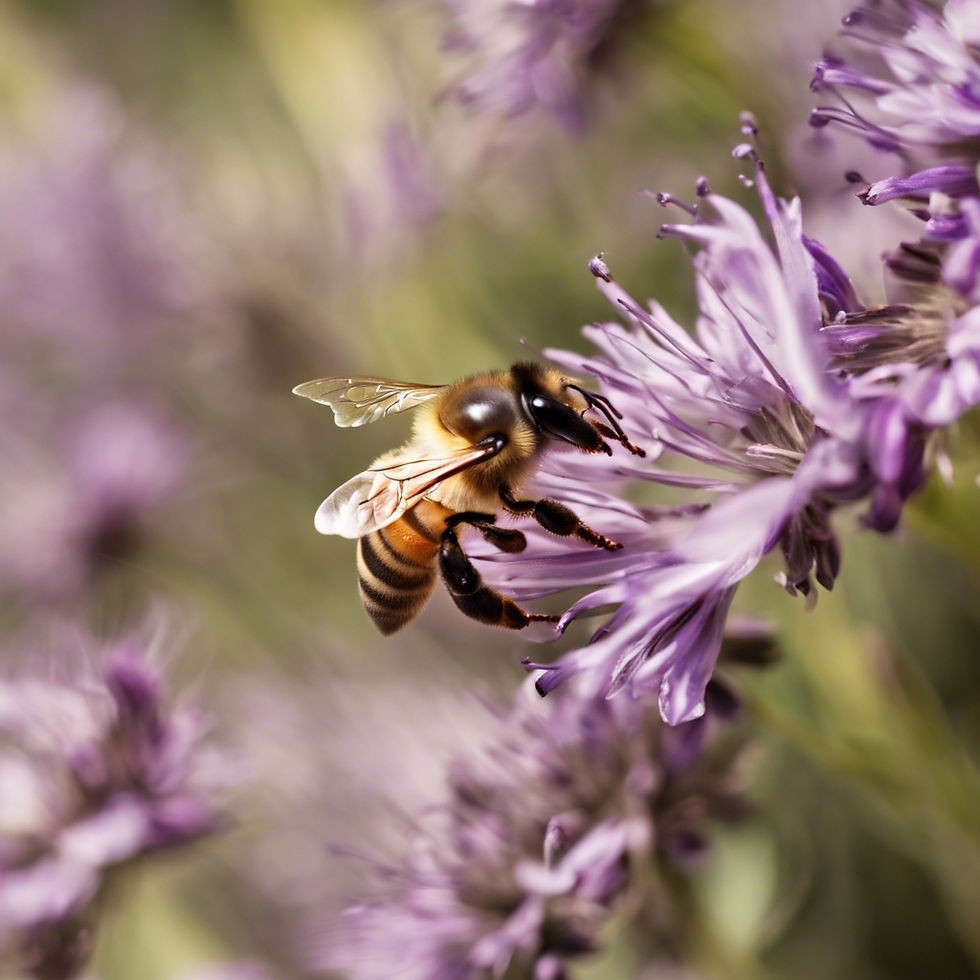What happens when we get stung by a bee?
- hshub3
- Dec 6, 2024
- 2 min read
What Happens When We Get Stung by a Bee?
The Quick Answer:
A bee sting injects venom through a stinger into your skin.
This causes immediate pain, redness, and swelling at the sting site.
The body reacts by releasing histamine, which can cause itching and further swelling.

Hello, nature explorers and curious learners! Krispy here, ready to tackle a question that might make you squirm a bit but is fascinating nonetheless: What happens when we get stung by a bee? While a bee sting can be painful, understanding the biology behind it can help us appreciate both the defense mechanisms of bees and how our bodies respond.
The Sting Mechanism
When a bee stings you, it uses a small, barbed stinger that’s part of its abdomen. This stinger is connected to a venom sac, which pumps venom into the wound after the stinger has penetrated the skin. For honeybees, this stinger is barbed and often remains lodged in the skin, pulling free of the bee’s body and causing it to die shortly after.
The Role of Bee Venom
Bee venom contains a mixture of proteins and enzymes, and it’s designed to ward off predators. The main component, melittin, causes most of the pain associated with a bee sting. It triggers the release of other substances in the body that increase blood flow and white blood cell activity at the sting site.
The Body’s Response
Your body’s immediate response to a bee sting is to release histamine, a chemical that prompts an inflammatory response. This can cause:
Pain at the sting site.
Swelling and redness, as fluids accumulate to cushion and protect the area.
Itching, which is a side effect of histamine release.
Allergic Reactions
While most bee stings are relatively harmless aside from temporary discomfort, some individuals are allergic to bee venom. This can lead to a more severe reaction known as anaphylaxis, which requires immediate medical attention. Symptoms of anaphylaxis include:
Difficulty breathing
Swelling of the face, throat, or mouth
Rapid heartbeat
Dizziness or a sharp drop in blood pressure
Treatment and Care
For non-allergic reactions, removing the stinger quickly is crucial to minimize the amount of venom injected. After removal, washing the area with soap and water and applying a cold pack can reduce pain and swelling. Over-the-counter pain relievers and antihistamines can help manage symptoms.
In Conclusion
Getting stung by a bee is a clear reminder of nature’s complexities—from the biological defenses of the bee to our own body’s response. Understanding these processes can help us react more effectively and appreciate the intricate interactions in the natural world.
Stay curious, my friends, and remember to respect our buzzing companions who play vital roles in ecosystems as pollinators. Until our next adventure, stay safe and keep exploring the wonders of nature!
Check out some Krispy Pigment Books!


